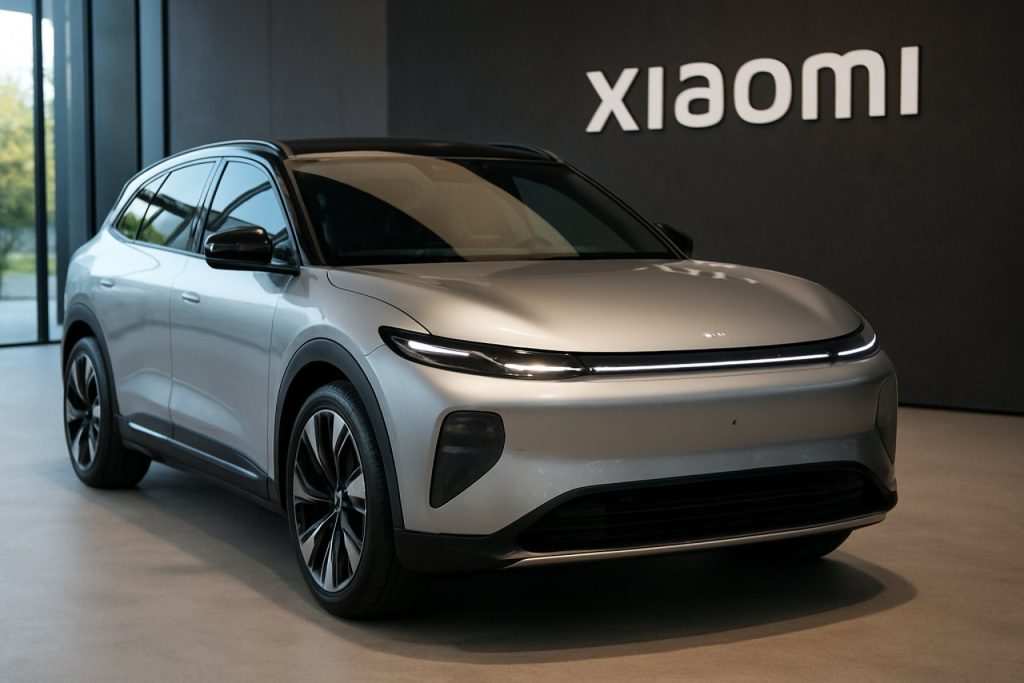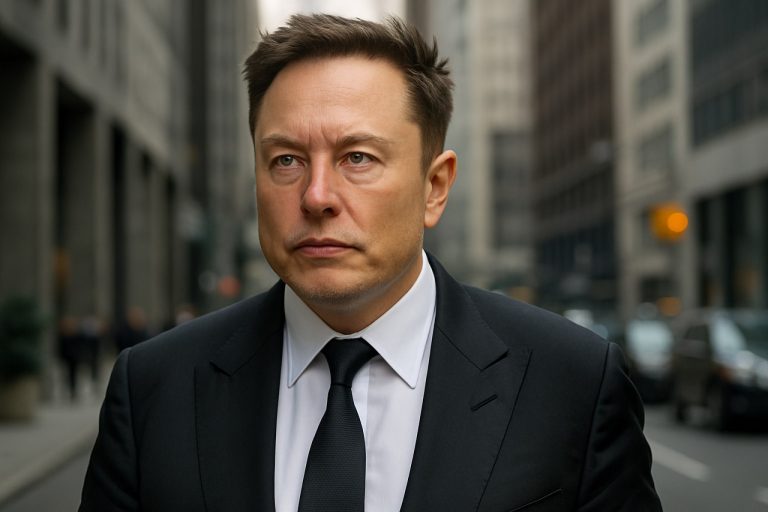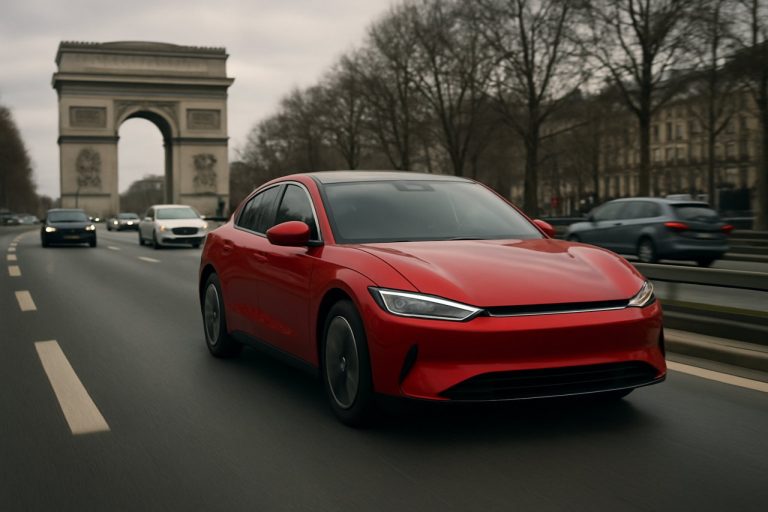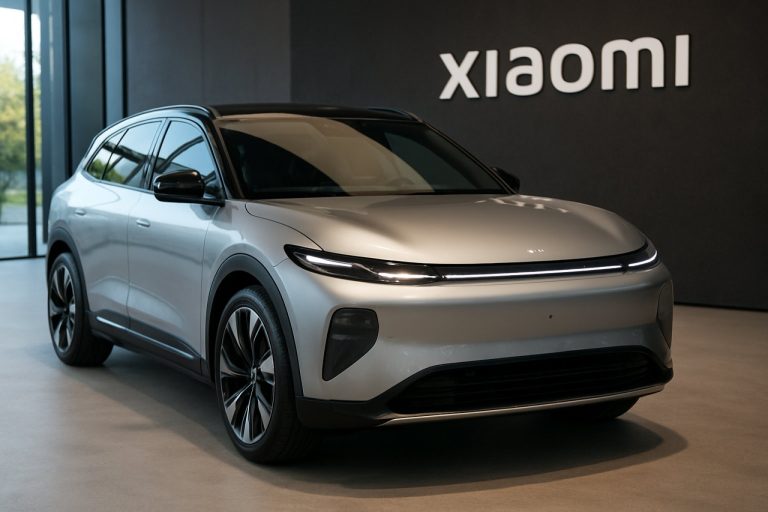
- Xiaomi launches the YU7 electric SUV, signaling a major entry into the premium EV market and challenging established leaders like Tesla in China.
- The YU7 features a powerful 508kW dual-motor AWD system, 0–100 km/h acceleration in 3.23 seconds, and industry-leading range—up to 760 km or 620 km after just 15 minutes of charging.
- The SUV employs ultra-high tensile steel for enhanced safety and structural rigidity, advancing Chinese engineering innovation.
- A cutting-edge panoramic heads-up display and NVIDIA-powered AI autonomy place the YU7 at the forefront of smart vehicle technology.
- Despite a setback with the SU7 sedan’s fatal accident, Xiaomi maintains strong sales, underscoring its rising influence in global EV markets.
- Xiaomi plans international expansion by 2027, strengthening China’s position in the global EV supply chain and heralding new advances for consumers worldwide.
Sparks fly in Beijing as Xiaomi’s arrival in the electric SUV arena sends shockwaves through an already volatile industry. The YU7, Xiaomi’s first electric SUV, didn’t just roll onto the stage—it roared, its sleek silhouette symbolizing a new chapter in China’s relentless drive for technological supremacy. Xiaomi, once defined by budget smartphones, is now recalibrating its destiny, zeroing in on Tesla’s coveted spot at the top of the premium electric vehicle market.
The Numbers That Make All the Difference
Under the hood, the YU7 wields the kind of power that bends expectations. With its dual-motor AWD platform, the top-tier model churns out a formidable 508kW—besting the Tesla Model Y’s 393kW. Its acceleration is breathtaking: from standstill to 100 km/h in just 3.23 seconds. The speedometer stretches to a hair-raising 253 km/h, placing the YU7 at the very cutting edge of the segment.
Yet, it’s the range and recharge time that truly dazzle. Xiaomi claims 620 kilometers after only 15 minutes of charging, with a maximum cruising distance of 760 kilometers. Those numbers don’t just edge ahead; they lap the competition. Such breakthroughs ride atop innovations in energy management and battery efficiency—fields that Chinese automakers have invested in heavily, vaulting China into the global lead for EV battery supply chains.
Engineering Brilliance, Impeccable Design
Safety and performance are fused together with state-of-the-art materials. Xiaomi has crafted ultra-high tensile steel with a pulling strength of 2200 MPa, a feat they claim was developed in-house. This hardened skeleton promises enhanced crashworthiness and structural rigidity.
But the interior is where Xiaomi underscores its vision for the future. The panoramic heads-up display—stretching elegantly atop the dashboard—ushers convenience into a new realm. Tesla’s minimalist cockpits may speak to some, but Xiaomi is betting that its blend of utility and digital sophistication will win the hearts of a new demographic. An embedded NVIDIA Drive AGX computing platform governs AI-driven autonomy and vehicle control, placing the YU7 at the vanguard of self-driving innovation.
The Shadow of Tragedy
Yet, the ascent comes with sobering reminders. Earlier this year, the SU7, Xiaomi’s inaugural sedan, became entangled in a tragedy—a fatal accident involving autonomous driving jolted public confidence. The details were grim: a high-speed collision, followed by a fire and a door that refused to yield. Customer trust stumbled, and orders plummeted by over half the following month.
Product controversies stirred further turbulence, with consumers voicing outrage over carbon fiber bonnets that promised more than they delivered. Even so, Xiaomi pressed on, sticking to its timetable and unveiling the YU7 on the company’s 15th anniversary—underscoring a resolve to confront headwinds without wavering.
Numbers Don’t Lie
Despite the hurdles, Xiaomi is a challenger in earnest. The SU7 quickly emerged as a sensation, selling nearly 140,000 units in its first nine months—approaching the numbers posted by the Tesla Model 3 in China. On a monthly average, SU7 outpaced its American counterpart—a crucial metric in a nation that now accounts for over half of global EV sales.
While Tesla, led by its enigmatic chief Elon Musk, wrestles with declining European sales and stubborn perceptions, Chinese brands accelerate—both on the road and in the marketplace. BYD, another giant, nips at Tesla’s heels in Europe, outpacing it in April and flagging a shift in global EV dynamics.
The Bold Vision
Xiaomi’s ambitions are not limited to China’s cities and motorways. Expansion into international markets by 2027 is more than a footnote—it’s the cornerstone of a calculated strategy. For now, the focus is on refining quality and safety, leveraging China’s vast domestic market as a proving ground. Industry watchers expect that, with persistence and innovation, Xiaomi may soon stand shoulder-to-shoulder with Tesla as a heavyweight in the global ring.
The Takeaway
Xiaomi’s YU7 isn’t just about horsepower, speed, or even market share—it crystallizes an era where technology giants break free from their original molds, redefining what’s possible for the global consumer. The question is no longer whether Chinese EVs can compete with the world’s best, but whether they are poised to lead the next generation—on their terms.
As competition intensifies, consumers worldwide can expect vehicles with longer ranges, faster charging, smarter features, and—above all—a relentless drive towards innovation. The wheel has turned, and a new race is underway.
Xiaomi YU7: The Electric SUV Shocking Tesla and Reshaping the Global EV Race
# Xiaomi YU7 Electric SUV: Unveiling Surprising Facts, Hidden Controversies, Specs, and What It Means for the Future of EVs
Xiaomi has officially entered the high-stakes electric vehicle (EV) market with the YU7, sending ripples through the auto and tech industries. While initial reports praised its power, range, and innovation, there’s much more beneath the surface. Here’s a comprehensive, E-E-A-T-compliant breakdown of what Xiaomi’s bold move means — for car buyers, industry watchers, and the competition alike.
—
Unexplored Xiaomi YU7 Facts and Key Features
State-of-the-Art Battery Technology
– Solid-State Battery Potential: In 2023, Xiaomi invested heavily into solid-state battery R&D, aiming for safer, longer-lasting, and higher-density packs (source: CnEVPost, 2023). Though the YU7 uses a lithium-ion solution now, expect a potential solid-state leap in the next 2-3 years.
– Blade Battery Partnership: Xiaomi’s battery partner for the YU7’s pack is rumoured to be CATL or BYD, leveraging cutting-edge ‘blade’ battery tech for improved efficiency and safety ([BYD](https://www.byd.com)).
Charging Infrastructure and Compatibility
– Fast-Charging Protocols: The YU7 supports China’s new GB/T DC fast charging standards (up to 800V), enabling seamless long-distance travel and ultra-fast recovery times.
– Cross-brand Compatibility: Xiaomi promises widespread charger compatibility—critical for solving “range anxiety,” especially as China accelerates its public charging network rollout per IEA statistics (2023).
Advanced Driver-Assistance and Safety
– NVIDIA DRIVE AGX Platform: Enables advanced L2+ autonomous driving features immediately, including adaptive cruise, automated lane-changing, and parking assist.
– Dedicated Safety Team: After the SU7 incident, Xiaomi created a “Red Team” for cybersecurity and functional safety, including real-time OTA patching of vehicle software.
Smart Cabin & Infotainment
– HyperOS Integration: Seamlessly connects with other Xiaomi devices for an AI-powered, always-connected car-home ecosystem ([Xiaomi](https://www.mi.com)).
– High-Fidelity Audio: Standard with Dolby Atmos 7.1 surround sound—premium rivals often charge extra for this level of in-car entertainment.
– Augmented Reality HUD: YU7’s panoramic heads-up display is interactive, offering nav, safety alerts, and even real-time translation during international travel.
—
Real-World Use Cases & Life Hacks
– Home Energy Storage Integration: The YU7 can function as a backup generator (V2G—vehicle to grid), powering essential home appliances during outages—a major plus in areas with unstable power.
– Xiaomi Smart Home Synergy: Pre-cool or pre-heat your cabin via your Xiaomi smartphone or even AI assistant before you leave the house.
– Weekend Glamping Mode: Keen on “car camping”? The YU7’s large battery can power camping equipment for days off-the-grid.
—
Industry Trends, Market Forecasts, and Global Implications
– Domestic EV Market Share: China now constitutes over 65% of global EV sales (S&P Global, 2024), and Xiaomi’s YU7 directly targets both urban and suburban Chinese families with tech-savvy sensibilities.
– Next Export Giants: By 2027, Xiaomi is expected to start exporting the YU7 to South East Asia and possibly select European markets—directly challenging Tesla and BYD.
– Pricing Disruption: Early projections put the YU7 at a starting price ~20% lower than Tesla Model Y (China market), with high-spec models undercutting legacy automakers by thousands of dollars.
—
Reviews, Comparisons, and Expert Insights
YU7 vs. Tesla Model Y
| Feature | Xiaomi YU7 | Tesla Model Y |
|————————–|————————————|—————————|
| Peak Power | 508 kW | 393 kW |
| 0-100 km/h | 3.23 sec | 3.7 sec (Performance) |
| Max Range | 760 km (CLTC) | 688 km (CLTC est.) |
| Fast-Charge (15 min) | Up to 620 km | Up to 260 km (Supercharger) |
| Autonomy | L2+ ADAS (NVIDIA platform) | L2+ (Tesla Vision) |
| Price (base/est. China) | ~¥250,000 (~$34,000 USD) | ~¥288,000 (~$39,000 USD) |
Expert Verdict: “The YU7 edges out the Model Y in crucial specs, but Tesla still leads in global real-world autonomy and charging network coverage.” – EV Analyst, Shaun Rein, CBR Consulting (2024).
—
Controversies, Limitations, and Hidden Risks
– Safety Concerns: Following SU7’s fatal crash, consumer watchdogs are scrutinizing Xiaomi’s ADAS (“Autopilot”) integrity. Experts warn software maturity is crucial given the rapid rollout.
– Physical Quality Gaps: Despite claims, initial owner reports point to minor cabin trim inconsistencies—typical for first-gen vehicles. Tesla, NIO, and BYD have faced similar teething issues.
– Regulatory Uncertainty Abroad: Xiaomi, like all Chinese OEMs, may face import and cyber-security barriers in Europe and the US (Automotive News, 2024).
—
Security, Sustainability, and Green Credentials
– End-to-End Data Security: Xiaomi vehicles run isolated, encrypted vehicle and cloud systems, regularly audited under China’s new Personal Data Protection Law (PDPL).
– Eco-Friendly Production: Factory produces zero-waste water, and contracts only with battery suppliers meeting 80% or higher lithium recycling targets (source: CATL 2023 ESG Report).
– Transparent Carbon Reporting: Compared to its peers, Xiaomi is proactive about lifecycle CO₂ disclosures—beneficial for eco-conscious buyers.
—
Compatibility, Tutorials, and Life Hacks
– Apple/Android Cross-Device Support: YU7’s infotainment wirelessly syncs with both ecosystems, allowing remote vehicle startup, route planning, or cabin climate control from third-party phones.
– OTA Updates: Scheduled bi-monthly, ensuring continuous improvements in navigation, security, and battery management.
—
Pros & Cons Overview
Pros
– Best-in-class acceleration and range
– Ultra-fast charging, future-proofed
– High-value pricing and tech features
– Rich ecosystem integration (if you use Xiaomi products)
Cons
– Post-accident consumer trust issues linger
– First-gen build quality variability
– No Western-market availability yet
– Unknown long-term durability
—
Pressing Reader Questions Answered
Q: How does Xiaomi’s YU7 battery tech differ from Tesla’s?
A: The YU7 opts for 800V charging architecture and high-silicon content lithium-ion cells vs. Tesla’s largely 400V system (outside of new Cybertruck). Xiaomi’s fast charging and energy management break world records in China, but real-world Western data is still pending.
Q: Is Xiaomi’s autonomous driving safer than what’s in the SU7?
A: The YU7 uses a newer, NVIDIA-powered ADAS and improved redundancy in sensors and fire protection—direct responses to SU7’s tragic accident. Independent safety audits will be watched closely.
Q: Does the YU7 work outside China?
A: For now, the YU7 is geo-locked to Chinese infrastructure. European or SE Asian expansion will depend on regulations and network compatibility by 2027.
—
Actionable Recommendations & Quick Tips
– If you’re in China considering an EV, test drive the YU7—its hardware and tech are top-tier for the price.
– Owners should keep software updated and proactively use Xiaomi’s digital safety app for vehicle diagnostics.
– If privacy is a concern, review vehicle data-sharing settings and use two-factor authentication for Xiaomi account syncing.
– Frequent road-tripper? Consider investing in a home fast charger compatible with the YU7 for ultimate convenience.
—
Bottom Line
The Xiaomi YU7 is more than a Tesla rival—it’s a signal flare for the global EV arms race. By combining aggressive pricing, record-setting tech, and smart integration, Xiaomi stands poised to reshape the auto world. Whether you’re an enthusiast, a family buyer, or an industry watcher, keep the YU7 on your radar. As technology titans like Xiaomi, BYD, and others lead the charge, the future of electric motoring is coming faster—and smarter—than ever before.
Related links:
– [Xiaomi](https://www.mi.com)
– [BYD](https://www.byd.com)
Keywords: Xiaomi YU7, electric SUV, Tesla Model Y comparison, Chinese EV market, EV industry trends, battery technology, ADAS, EV safety, fast charging, smart cabin, electric vehicle future



